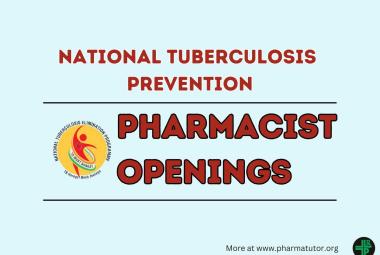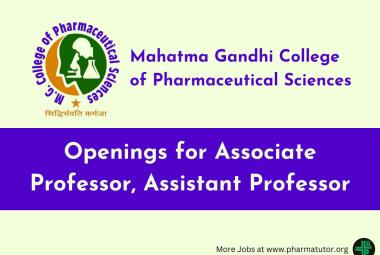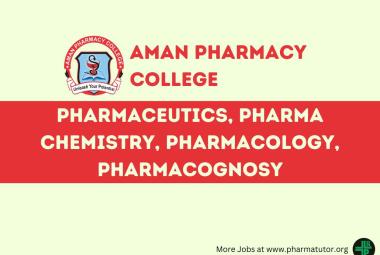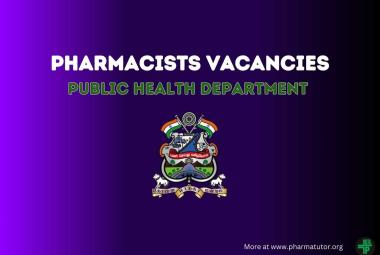ABOUT AUTHORS:
Mahaveer Kabra*, Sanjay Bhandari, Natasha Sharma Raman Gupta.
Department of Pharmacology,
Kota College of Pharmacy, Kota. Raj.
*sanskarkabra@gmail.com
ABSTRACT:
Abrus precatoriusLinn (Fabaceae) Plant found all throughout the plains of India, from Himalaya down to Southern India and Ceylon. It is used medicinally in various country. The roots, leaves and seeds of the plant are used medicinally. Glycyrrhizin, Triterpene glycosides, pinitol and alkaloids such as abrine, hepaphotine, choline and precatorine are the principle chemical constituents of the plants. Traditionally leaves are used as aphrodisiac, tonic, remove biliousness, useful in eye diseases, cures leucoderma, itching, skin diseases and wounds. The root is considered emetic and alexiteric. Internally, the seeds are described as poisonous and useful in affections of the nervous system and externally used in skin diseases, ulcers and affections of the hair. Antifertility, Antithrombin, Aanthelmintic Activity, Antimalarial are some reported activity of Abrus precatorius Linn.
REFERENCE ID: PHARMATUTOR-ART-1803
INTRODUCTION:
Plant Profile:
Plant Taxonomy:
Botanical name: Abrus precatorius Linn.
Synonym: Jequirity, Gunja
Family: Fabaceae
Kingdom: Plantae
Division: Magnoliophyta
Order: Fabales
Subfamily: Faboideae
Tribe: Abreae
Genus: Abrus
Species: Abrus precatorius
Synonyms and Regional Names: (1, 2)
Sanskrit: Gunja
English : Jequirity
Marathi: Gunja
Hindi: Gunchi, Gunja
Gujarati: Gumchi
Telugu: Guruginia
Punjabi: Mulati
Urdu: Ghunchi
Cannad: Gurugunji
Botanical Description: A creeper with many branches. Leaves resemble tamarind leaves having 20-40 leaflets. Flowers are pink, bluish and appear in cluster. Legumes are 1.5- 3.5 cm long containing red, white and black colored seeds. Red colored seeds have black spot on their tips. Roots and leaves are sweet like that of G. Glabra (4).
Habitat: It is used medically in china, Indo china, Islands, West Indies, Guina, Brazil, udan, South Africa, Madascar and India. Plant found all throughout the plains of India, from Himalaya down to Southern India and Ceylon (1, 2).
Phenology : Flowers in winter; fruits ripen in summer (2).
Propogation: by seeds (2).
Parts Used: The roots, leaves and seeds of the plant are used medicinally (1, 5).
Chemical Constituents:
i. Leaves: The leaves which are sweet in taste contain up to 10% Glycyrrhizin, triterpene glycosides, pinitol and alkaloids such as abrine, hepaphotine, choline and precatorine. The triterpene glycosides are abusosides A, B, and C, (which are highly sweet) and tree glycosides based on cycloartane-type aglycone, abrutigenin. Other compounds of the leaves are tritepenes abrusgenic acid, abruslactone A and methyl abrusgenate and flavonoids vitexin, liquirtiginin-7-mono- and diglycosides and toxifolin-3-glucosides (5).
ii. Root: Root contains glycyrrhizin and alkaloids like abrasine and precasine besides abrine and related bases (5).
iii. Seeds: Seed analysis shows presence of moisture (5.06 %), fat (3.92 %), and crude protein (39.20 %), crude fibre (9.08 %), carbohydrates (42.42 %) and ash (5.38 %). The seeds yield alkaloids, a fixed oil, steroids, lectine, flavonoids, and anthocyanins (6).
The alkaloids of the seeds are abrine, hpaphotine, choline and precatorine. The oil content of seed is only 2.5 %, which is rich in oleic acid and linoleic acids. β-sitosterol, stigmasterol, 5β-cholanic acid,abricin, and cholesterol are the steroids present. The colour of the seed is due to glycosides of abranin, pelargonidin, cyaniding, and delphinidin. A sapogenol, abrisapogenol J, sophoradiol, its 22-O-acetate, hederagenin methyl ether, kaikasaponin III methyl ester, flavones suych as abrectorin and aknone are the other constituents of the seeds. Lectines are the chief constituents of the seeds, the principal ones being abrin. Lectins are both toxic (abrin) and non toxic (abrus agglutinin). Abrins are denoted by abrin a, b, c and d and consist of one large β-polypeptide chain (MW. 35,000) and short α- polypeptide chain joined by disulphide bond (5).
Traditional Uses:
i. Leaves:
Leaves are used as aphrodisiac, tonic, remove biliousness, useful in eye diseases, cures leucoderma, itching, skin diseases and wounds. In addition they also cure fevers, stomatitis, head complaints, asthma, thirst, tuberculous glands and caries of teeth. When leaves are steeped in warm mustered oil and applied over the site of pain in rheumatism much benefit will be derived. The juice of the fresh leaves, mixed with some bland oil, applied externally, seems to relieve local pain (2). Powdered leaves mix with sugar given in case of leucoderma and menorrhagia (6).The leaves also used as diuretic, diarhhoea, gastritis, heart diseases, kidney diseases, insomnia, cancer and CNS (7).
A cross-sectional study performed in Temeke District (Dares Salaam, Tanzania) showed that 5.5 % of the traditional healers have knowledge for the treatment of epilepsy. Since among these healers, 110 were reported to treat epilepsy, a convenience sample of 100 healers was interviewed using a structured questionnaire. A prior informed consent for each interview was secured. All the interviewed healers were required to narrate the symptoms that an epileptic patient would have. They were also asked to indicate the plants they use for treatment, parts used, and methods of preparation and frequency of administration. The leaves were boiled with water and given orally as three table spoonfuls in twice daily dosage regimen. Information from the literature shows that Abrus precatorius L. can be used by people for the treatment of epilepsy (8).
ii. Root:
The root is considered emetic and alexiteric. The watery extract is useful in relieving obstinate coughs. The roots employed as a substitute for liquorices. Roots are taken for sore throat and rheumatism (2). The root also used as diuretic, diarhhoea, gastritis, heart diseases, kidney diseases, insomnia, cancer and CNS (7). The roots are also usefulness in gonorrhoea and jaundice and other infections (5).
iii. Seeds:
Internally, the seeds are described as poisonous and useful in affections of the nervous system and externally used in skin diseases, ulcers and affections of the hair. The seeds reduced to a paste are recommended to be applied locally in sciatica, stiffness of the shoulder joint, paralysis and other nervous diseases. In white leprosy, a paste composed of the seed and plumbago root is applied as stimulant dressing. In alopecia a paste of the seed is recommended to be rubbed on the bare scale. The seeds are used as purgative, but in large doses are acrid poison, given rise to symptoms resembling those of cholera. Taken internally by women, the seed disturbs the uterine functions and prevents conception. Reduced to a paste they are used for contusion and inflammation (2). The root also used as diuretic, diarhhoea, gastritis, heart diseases, kidney diseases, insomnia, cancer and CNS (7).
Reported Activities of Abrus precatorius L.
i. Neuromuscular Effects:
Some neuromuscular effects of the crude extracts of the leaves of Abrus precatorius were investigated using isolated toad rectus abdominals and rat phrenic nerve-diaphragm muscle preparations as well as young chicks. The ethanol extract of the leaves inhibited acetylcholine-induced contractions of both toad rectus abdominis and rat phrenic nerve-diaphragm muscle preparations. The effects were concentration-dependent and reversible. The extract also caused flaccid paralysis when injected intravenously into young chicks. The ethanol extract had no effect on direct electrical stimulation of rat diaphragm. The inhibitory effect of the ethanol extract on the rat phrenic nerve-diaphragm preparation was potentiated in the presence of reduced calcium ions, elevated magnesium ions, or reduced potassium ions. Thus, the ethanol extract showed a similarity to d-tubocurarine in respect of the pattern of neuromuscular blockade. Both the petroleum ether and the water (cold and hot) extracts had no observable effects on the skeletal muscles used in this project. Apparently, the poisonous neuronal component of the leaves of Abrus precatorius resides mainly in the ethanol extract (9).
ii. Dalton’s Lymphoma:
It has been reported that abrus abrin, isolated from the seeds of Abrus precatorius, showed in vitro and in vivo antitumor properties by the induction of apoptosis. The present study was designed to evaluate the in vivo therapeutic effectiveness of abrin-derivedpeptide (ABP) fraction in Dalton’s lymphoma (DL) mice model. The lethal dose (LD50) of ABP was found to be 2.25 mg/kg body weight and further the acute toxicity was determined with sublethal doses in normal mice. (10).
iii. Alzheimer’s Disease:
Abrus precatorius L. lectinhave been used to identify glycohistochemically the microglial cells (MGC) activation in autoptic brain samples from Alzheimer’s disease subject. Abrus precatorius agglutinin recognizes MGC in the cerebral white matter from all AD patients studied. These MGC are of rod-like types and appear to be particularly dense in those areas proximal to an oligodendroglial cell. The identification of new markers for the study of MGC is very important to better understand the role of these types of cells in the metabolic/ dismetabolic control of bA4 in AD which still represents a vexata questio (11).
iv. Antimalarial:
An isoflavaquinone- abruquinone was isolated from the extract of aerial parts and exhibited antimalarial activity. Antiplasmodial activity and cytotoxicity in the assessment of antimalarial activity was further done (12). The antiplasmodial activity was evaluated by the radioactive micromethod while cytotoxicity was estimated on melanoma cell (A375). Extract testing was performed at three different times in triplicate in 96-well culture plates with cultures mostly at ring stages at 0.5-1 % parasitemia. Abrus precatorius pentane extract presented an IC50 value below 20 g/ml (12).
NOW YOU CAN ALSO PUBLISH YOUR ARTICLE ONLINE.
SUBMIT YOUR ARTICLE/PROJECT AT articles@pharmatutor.org
Subscribe to Pharmatutor Alerts by Email
FIND OUT MORE ARTICLES AT OUR DATABASE
v. Aanthelmintic Activity:
Aqueous extract of stem and root of Abrus precatorius was evaluated for its anthelmintic activity using in vitro experiments with cestodes and schistosomula. Lethal concentration against cestodes was 103 mg/ml for the extract of root. However, extracts of root (0.6 mg/ml) and stem (1.5 mg/ml) of Abrus precatorius showed best results against schistosomules. Indole alkaloids (abrine) amino acids, tannins, terpenes, steroids and flavonoids have been detected in Abrus precatorius. A high concentration of one of these constituents or a combination of them may be responsible for the anthelmintic effect, and without doubt makes A. precatorius a potent plant in the vernacular treatment of schistosomiasis (13).
vi. Antithrombin:
Methylene chloride and methanol fraction of arial parts of Abrus precatorius was evaluated for its in vitro antithrombin activity. A corning 96 well flat bottom plate (well diameter 6.4 mm) was utilized. Into the first well, pure methanol (50 ml) was placed for the control. Then 50 ml of the thrombin solution (which has been prepared by reconstituting 500 units of Bovine Plasma Lyophilized powder from Sigma Chemical Company) was placed in each well. The plate was then incubated at 37 oC for 5 min. Subsequently, 50 ml of the chromogenic reagent was placed in each well. The 96 well plates were then placed in a Molecular Devices kinetic microplate reader. The absorbance at 45 nm was measured continuously over a 5 min period. A plot of this continuous measurement was obtained as well as the absorbance at the end of the 5 min. Methylene chloride and methanol fraction showed 53 % and 31 % of inhibition, respectively, and has demonstrated activity in inhibition of thrombin (14).
vii. Antifertility:
Antiferitility activity of ethanlic extract of A. prectaorius seed was evaluated for its effect on sperm production and DNA integrity of spermatozoa in intraperitoneally administered adult male albino mice of BALB/c strain.The daily sperm production was measured by counting testicular spermtids in Horwell chamber while DNA damage in epididymal spermatozoa was determined by comet assay in 20 days of experimental procedure. The intraperitoneal administration of 20 and 60 mg/kg of ethanolic seed extract of A. precatorius caused a highly significant (p<0.001) decrease in daily sperm production. The reversibility in sperm production was observed in all the treated animals after 20 days of withdrawal of treatment. Similarly, a highly significant increase (p<0.001) in DNA damage was observed in all the treated animals and no significant reversibility in DNA damage was observed during treatment period. This study suggests the role of seed extract of A. precatorius as an antifertility agent or contraceptive with a risk of DNA damage in spermatozoa and may lead to teratogenic effects(15).
viii. Sperm Antimotility Activity:
This study examined the inhibitory effects of a methanol extract of Abrus precatorius seeds on the motility of washed human spermatozoa. The extract caused a concentration-related impairment of percentage sperm motility; with the EC50 concentration being 2.29 mg/ml. This effect on motility was essentially irreversible. In contrast, with a lower concentration (5.0 mg/ml), such effects were not evident. It is concluded that at the lower concentrations the antimotility action may result from a rise in intracellular calcium (not via influx) and/or a decline in cAMP content and/or enhanced generation of a reactive oxygen species (16).
ix. Renal Damage:
Renal protective activities of the seed extract of Abrus precatorius following alcohol induced renal damage in adult male Sprague dawley wister rats was investigated. Histological studies, biochemical indicators of renal function and thiobarbituric acid-reactive substances, as markers of lipid peroxidation, were thereafter determimed. Oral administration of alcohol caused significant elevation of serum potassium and sodium levels as well as creatinine and malondialdehyde levels. There were structural alterations in renal tubules, glomerular infiltration by chronic inflammatory cells. Concurrent administration of same doses of alcohol and seed extract of Abrus precatorius resulted in a suppression of alcohol- induced renal injury. Measurement of malondialdehyde level indicated that this effect is related to the attenuation of alcohol induced lipid peroxidation by the seed extract (p<0.05). Seed extract of Abrus precatorius could protect the kidney against alcohol- induced parenchymal injury (14).
x. Nephroprotective:
Nephroprotective study of aqueous extract of arial parts of Abrus preacatorius was undertaken to determine the recovery effect of cisplatin and acetaminophen induced nephrotoxicity. The recovery effect of Abrus precatorius on HEK 293 cells that had been damage by cisplatin and acetaminophen were evaluated by mitochondrial activity MTS assay. The assay showed that Abrus precatorius had best recovery effect and can be used for the prevention or treatment of renal disorders(15, 16).
xi. Immunomodulator:
Abrusagglutinin, similar to ML-1 with respect to carbohydrate specificity [gal (β1→3) gal/Nac], was studied both in native (NA) and heat denatured (HDA) condition for murine splenocyte proliferation, cytokine secretion, NK-cell activation and thymocyte proliferation in vitro with a view to assess its potential as an immunomodulator. Both NA and HDA activate splenocytes and induce production of cytokines like IL-2, IFN-γ and TNF- αβ indicating a Th1 type of immune response. Native agglutinin and HDA induced conditioned media of adherent splenocytes could stimulate non-adherent splenocytes and vice versa. Heat denatured agglutinin was able to induce NK-cell activation at much lower concentration than that of NA, but the extent of NK-cell activation was higher for NA. Proliferation of thymocytes by NA and HDA was also observed. This study indicates that Abrusagglutinin could be a potential immunomodulator both in native as well as in heat denatured form (17, 18).
xii. Immunostimulatory Properties:
In vitro immunostimulatory effect of Abrus lectins derived peptide fractions (AGP and ABP) was investigated in DL bearing mice. Both AGP and ABP were found to activate splenocytes and induced production of cytokines like IL-2, IFN-γ and TNF-α indicating a Th1 type of immune response. It was also observed that NK cell was activated by AGP and ABP. These results suggest that both AGP and ABP act as immunostimulants in vitro in DL bearing mice (18).
xiii. Anti-inflammatory Activity:
Two triterpenoid saponins 1 and 2 isolated from the aerial parts of Abrus precatorius and their acetates derivatives, 3 and 4 have been tested for anti-inflammatory activity using the croton oil ear model. Tissue portions of the ears of the rats treated with anti-inflammatory agents was compared with those of test treated group. Reduction in inflammation was observed in the ears of the rats under test, whereas inflammation was markedly observed in the ears of the rats under control. All test compounds exhibited anti-inflammatory activity but the acetates showed greater inhibition at both 300 µg and 600 µg concentration than the parent compounds. Acetates derivatives of parent compounds were more effective at 600 µg concentration among all test treated group (19).
xiv. Antidiabetic Effect:
The antidiabetic effect of chloroform – methanol extract of Abrus precatorious seed, was studied in alloxan diabetic rabbits. The effect was compared to that of chlorpropamide – a known antidiabetic drug in the class of sulphonylurea and a control group that received normal saline instead of the extract. When 50 mg / kg body weight of chloroform – methanol, chlorpropamide and 5 ml of normal saline for control were given orally, blood glucose levels decreased in chloroform – methanol and chlorpropamide groups of alloxan diabetic rabbits but not in control. This study therefore has shown that the chloroform – methanol extract of Abrus precatorius seed has some antidiabetic properties similar to that of chlopropamide (20).
CONCLUSION:
The plant Abrus precatorious Linn produced different pharmacological activity eg. Antimalarial, Anidiabetic, Anti-inflammatory, Immunomodulator, Nephroprotectie etc. the plant also have traditional value such as aphrodisiac, remove biliousness, useful in eye diseases, cures leucoderma, itching, skin diseases and wounds. The above medicinal value of this plant is due to the presence of glycosides and alkaloids obtained from the various parts of this plant.
REFERENCES:
1.Nadkarni, K.M., 1999. Indian Materia Medica. Vol-I, Fifth ed. Popular Prakashan, Mumbai, pp. 4-7.
2.Kirtikar, K.R., Basu, B.D., 2005. Indian Medicinal plants. Second ed. vol-I, International Book Distributors, Dehradun, pp. 763-767.
3.http://www.hear.org/starr/images/images/plants/full/starr-031108-3195.jpg.
4.Gogte, V.V.M., 2000. Ayurvedic pharmacology and therapeutic uses of medicinal plants: Dravyagunavignyan. Bhartiya Vidya Bhavan, Mumbai, pp.600-601.
5.Daniel, M., 2006. Medicinal Plants: Chemistry and properties, first ed. Oxford and IBH Publishing House Co. Pvt. Ltd, New Delhi, pp. 118-119.
6.Chadha, Y.R., 2004. The Wealth of India. A dictionary of Indian Raw Materials and Industrial products, Vol- 1: A. National Institute of Science Communication and Information Resource, Council of Scientific and Industrial Research, New Delhi, pp. 18-19.
7.Kubiatowicz, R., Benson, L., 2003. Oh no! Ethnobotany. The safe handling and storage of hazardous ethnobotanical artifacts. Allen Press. 18(1–2), 59–73.
8.Moshi, M.J., Kagashe, G.A.B., Mbwambo Z.H., 2005. Plants used to treat epilepsy by Tanzanian traditional healers. Journal of Ethnopharmacology. 97, 327-336.
9.Wambebe, C. , Amosun, S.L., 1984. Some neuromuscular effects of the crude extract of the leaves of Abrus precatorius. Journal of Ethnopharmacology. 11 (1), 49-58.
10.Bhutia S.K., Mallick S.K., Maiti, S., Maiti T.K., 2009. Inhibitory effect of Abrus abrin derived peptide fraction against Dalton’s lymphoma ascites model. Phytomedicine. 16, 377-385.
11.Zambenedetti, P., Giordano, R., Zatta, P., 1998. Histochemical Localization of Glycoconjugates on Microglial Cellsin Alzheimer’s Disease Brain Samples by Using Abrus precatorius, Maackia amurensis, Momordica charantia, and Sambucus nigra Lectins. Experimental Neurology. 153, 167–171.
12.Menan, H., Banzouzi, J.T., Hocquette, A., Pelissier, Y., Blache, Y., Kone, M., Mallie, M., Assi, L.A., Valentin, A., 2006. Antiplasmodial activity and cytotoxicity of plants used in West African traditional medicine for the treatment of malaria. Journal of Ethnopharmacology. 105, 131-136.
13.Molgaard, P., Nielsen, S.B., Rasmussen, D.E., Drummond, R.B., Makaza, N., Andreassen, J., 2001. Anthelmintic screening of Zimbabwenean plants traditionally used against schistomiasis. Journal of Ethnopharmacology. 74, 257-264.
14.Chistokhodova, N., Nguyen, C., Calvino, T., Kachirskaia, I., Cunningham, G., Miles, D.H., 2002. Antithrombin activity of medicinal plants from central florida. Journal of Ethnopharmacology. 81, 277-280.
15.Sohn, S.H., Lee, E.Y., Lee, J.H., Kim, Y., Shin, M., Hong, M., Bae H., 2009a. Screening of herbal medicines for the recovery of acetaminophen induced nephrotoxicity. Environmental Toxocology and Pharmacology. 27, 225-230.
16.Sohn, S.H., Lee, H., Nam, J.Y., Kim, S.H., Jung H.J., Kim, Y., Shin, M., Hong, M., Bae, H., 2009b. Screening of herbal medicines for the recovery of cisplatin induced nephrotoxicity. Environmental Toxocology and Pharmacology. 28, 206-212.
17.Tripathi, S., Maiti, T.K., 2005. Immunomodulatory role of native and heat denatured agglutinin from Abrus Precatorius. The International Journal of Biochemistry and Cell Biology. 37, 451- 462
18.Maiti, T.K., Bhutia, S.K., Mallick, S.K., 2009. In vitro immunostimulatory propertiesof Abrus lectins derivedpeptidesin tumor bearingmice. Phytomedicine. 16, 776-782.
19.Anam, E.M., 2001. Anti-inflammatory activity of compounds isolated from the aerial parts of Abrus precatorius (Fabaceae). Phytomedicine. 8(1), 24-27.
20.Gbolade, A.A., 2009. Inventory of antidiabetic plants in selected districts of Lagos State, Nigeria. Journal of Ethnopharmacology. 121, 135139
NOW YOU CAN ALSO PUBLISH YOUR ARTICLE ONLINE.
SUBMIT YOUR ARTICLE/PROJECT AT articles@pharmatutor.org
Subscribe to Pharmatutor Alerts by Email
FIND OUT MORE ARTICLES AT OUR DATABASE










